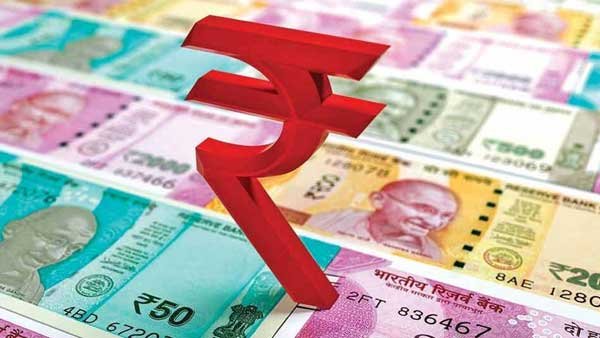In the midst of global economic uncertainty, the Indian rupee emerged as one of the most stable currencies among emerging markets in the past year. This stability was attributed primarily to the narrowing current account deficit (CAD) and robust economic fundamentals.
The current account deficit is a measure of a country’s total value of goods and services imported exceeding the value of goods and services exported. It includes the sum of trade balance and net income from abroad. In India’s case, a deficit implies higher demand for foreign currency, particularly the US dollar.
When a country experiences a current account deficit, there is increased demand for foreign currency, leading to depreciation of the domestic currency. In contrast, a narrowing deficit reduces the demand for foreign currency and supports the stability or even appreciation of the domestic currency.
India’s Current Account Deficit Situation
The current account deficit (CAD) serves as a vital indicator of a country’s economic health, representing the disparity between the value of goods and services a nation imports and exports, including the net income from abroad. In essence, when a country’s imports exceed its exports, resulting in a negative balance, it signifies a current account deficit. In the case of India, a deficit implies that the nation is spending more on foreign goods and services than it is earning through exports, thus creating a higher demand for foreign currency, particularly the US dollar, to finance this shortfall.
When a country experiences a current account deficit, it triggers an increased demand for foreign currency in the foreign exchange market. This heightened demand for foreign currency, such as the US dollar, places downward pressure on the value of the domestic currency, leading to its depreciation. As a result, the domestic currency becomes weaker relative to foreign currencies, impacting trade competitiveness and potentially exacerbating the current account deficit further.
Conversely, when a country’s current account deficit begins to narrow, indicating a reduction in the disparity between imports and exports, it mitigates the demand for foreign currency. With less pressure on the demand for foreign currency, particularly if exports are increasing or imports are decreasing, the domestic currency can stabilize or even appreciate against foreign currencies. This stability or appreciation of the domestic currency enhances investor confidence, encourages foreign investment inflows, and supports economic growth.
RBI’s Assertion
The Reserve Bank of India (RBI) has emphasized the crucial role played by India’s sound economic fundamentals, particularly the easing current account deficit, in maintaining the stability of the Indian rupee amidst global economic challenges. According to the RBI, “Its relative stability in the recent period, despite a stronger US dollar and elevated US treasury yields, reflects the strength and stability of the Indian economy, its sound macroeconomic fundamentals, financial stability and improvements in India’s external position, particularly the significant moderation in the current account deficit, comfortable foreign exchange reserves and return of capital inflows.”
Furthermore, statistical data supports the RBI’s assertion regarding the moderation of India’s current account deficit. In the second quarter of the financial year 2023-24, India’s current account deficit narrowed sharply to 1% of GDP, down from 3.8% in the same period a year earlier. This significant reduction in the deficit reflects improved external trade performance and reduced reliance on foreign borrowing, contributing to currency stability and investor confidence. Overall, the RBI’s assessment underscores the importance of maintaining sound economic fundamentals and addressing current account imbalances to sustain the stability of the Indian rupee amidst global economic uncertainties.
Manageability Of India’s Current Account Deficit
According to the World Bank, India is poised to receive an estimated $135 billion in inward remittances in 2024, positioning it as the largest recipient of such funds globally. This substantial influx of remittances underscores the significant role played by overseas Indians in contributing to the Indian economy. Coupled with robust foreign direct investment (FDI) inflows, this steady stream of remittances provides a vital source of foreign exchange earnings, thereby contributing to the overall financing of India’s current account deficit. As per the World Bank’s projections, the combination of inward remittances and FDI inflows plays a pivotal role in bolstering India’s economic resilience and mitigating the impact of external imbalances.
Moreover, India’s healthy foreign exchange reserves, which stood at $622.5 billion, provide a robust buffer against external shocks and uncertainties. These ample reserves not only ensure stability in the currency market but also instill confidence among investors and market participants. As a result, India’s foreign exchange reserves serve as a crucial component of the country’s economic resilience and are instrumental in supporting a stable currency outlook.
In essence, the combination of substantial inward remittances, strong FDI inflows, and healthy foreign exchange reserves paints a favorable picture for India’s economic outlook, underscoring its ability to manage its current account deficit effectively and maintain currency stability amidst global economic fluctuations.
The relative stability of the Indian rupee amidst global economic turbulence can be largely attributed to the narrowing current account deficit and robust economic fundamentals. With a shrinking deficit, increased remittances, and strong foreign investment inflows, India’s currency outlook remains positive. However, continued efforts to strengthen the economy and maintain fiscal discipline will be essential to sustain this stability in the long term.
-By Katyayani Joshi
Disclaimer: We do not hold any right, copyright over any of the images used, these have been taken from Google. In case of credits or removal, the owner may kindly mail us.




